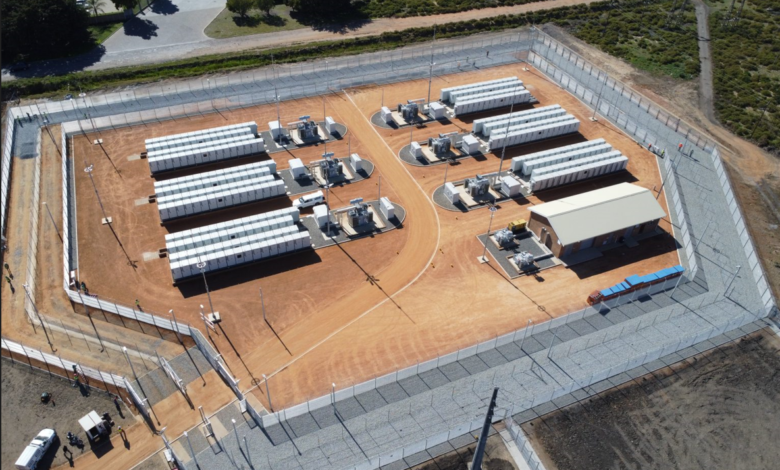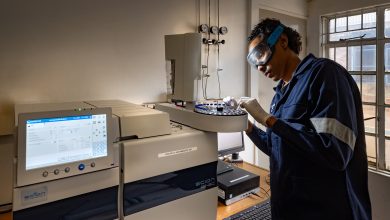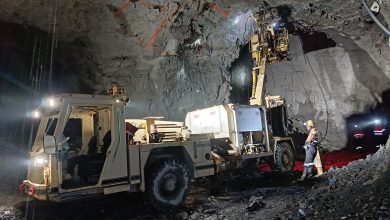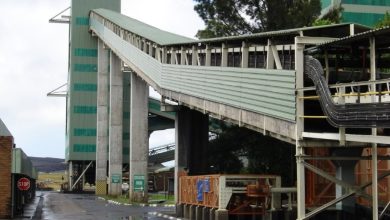
It is hard not to notice that mines are using lithium-ion battery energy storage systems with renewables. In this way, they are achieving two objectives: ensuring that downtime in the power supply does not interfere with production, and cutting emissions from the use of diesel generators.
There is a strong business case for effective grid-scale Battery Electric Storage Systems (BESS) in the current mining environment. Concurrently, to meet demand, there is an increase in lithium-ion battery brands released to the market. This has widened the range of BESS options to select from.
Previously, lead-acid batteries were the primary battery product. However, comparatively, grid-scale lithium-ion batteries have emerged as an affordable option, with a growing market share.
Pressing needs
Advances in technology incorporated have placed lithium BESS as a strong option to meet the pressing needs in mines, which are a stable and predictable power supply, and reducing greenhouse gas emissions.
- Predictable energy sources
Mining is inherently power-intensive. Essentially, they require a consistent and optimal supply to ensure continuous operations.
Hence, as they are increasing production, mining companies need predictable sources of power as backups to utilise during peak demand or in the event of downtime of primary sources. Usually, downtime can translate into millions in a loss of revenue.
Besides, what a perfect time to have alternative sources to explore!
Mines are bearing increasing operating costs and falling profit margins. Against this backdrop, according to the Institute of Materials, Minerals and Mining (IMMM), power consumption accounts for up to 40 per cent of a mine’s operating costs.
- Reducing emissions
Mining companies are acknowledging their culpability as ‘biggest’ polluters and are seeking avenues in their operations from pit to port through which to clean up their act. Increasingly, they are embracing lithium-ion BESS as one sure way they can achieve this.
Renewables the catalyst
The falling cost of switching to renewables, mainly wind and solar, has underscored the need for reliable BESS. While wind and solar are affordable, the downside is that they cannot provide consistent and reliable power, as they are at the mercy of inclement weather. So, using reliable lithium-ion BESS offsets the intermittency.
BESS enables the microgrid to increase the amount of renewable energy it uses. It compensates for sudden variations in the power output of solar panels and wind turbines, according to Saft, a BESS solutions provider.
Sebastien Hita Perona, Saft’s energy storage solutions general manager, explains: “Energy storage solves renewables’ intermittency and allows them to be integrated into base load resource planning.”
In an insight Enabling renewable energy with battery energy storage (2023), McKinsey & Company) sheds more light: “The flexibility BESS provides will make it integral to applications such as peak shaving, self-consumption optimization, and backup power in the event of outages.”
McKinsey & Company mentions cycle life and affordability as the determining factors for battery selection, and lithium-ion batteries fit the bill as they tick these critical boxes.
What gives lithium-ion batteries the edge
Based on information suppliers of BESS shared with MBA, the following factors are driving mining companies to Lithium-ion batteries:
- Longer life cycle – Longer Depth of Discharge (DOD)
The rule of the thump is the Longer Depth of Discharge (DOD) and longer life cycle. From this perspective, Lithium-ion batteries have the edge over conventional lead-acid batteries.
The recommended maximum depth of discharge (DoD) of the batteries is 80%, which translates into a life of 5000 cycles. In contrast, lead-acid batteries are limited to a discharge range of 40-50% DoD. This yields a cycle life of 1800-2500 cycles. Even though this statistic is for premium lead batteries, average ones could be lower.
- Lighter
Transportation is a big cost as mines are in remote areas far from suppliers. Compared to lead-acid batteries, lithium batteries are the better option.
In addition, they are lighter – a quarter of a lead acid battery’s weight with the equivalent capacity. In addition, the volume is equivalent to a third lead acid battery.
- Reduced expenditure (cost savings)
Thus, due to the long life cycle, lithium batteries are less often replaced, which translates into reduced expenditure on battery storage. Further, less weight reduces the transport costs and lessens the burden of installation.
- High charge efficiency
If recharged over two hours, the charge efficiency of lithium batteries is 96% (4% lost). This efficiency improves to 98% (2% lost) if recharged over ten hours.
In comparison, the average charge efficiency of lead-acid batteries is 67% (33% lost). Also, lead-acid batteries are not rechargeable in two hours. The closer a lead acid battery gets to a 100% state of charge (SoC), the slower it charges.
- Improved safety
Over-charging a lead acid battery reduces its lifespan dramatically and may cause the release of toxic gases. As standard, LiFePO4‘s safety LiFePO4 batteries include battery management system (BMS) electronics, which protect the batteries against over-charge, over-discharge and short-circuit complications. This boosts safety.
Uptake in mining
Amid all the hype, it is tempting to ask: are mines adopting LFP BESS in droves?
The fact is that mining companies are conservative in exploring new technologies. Their thinking goes: if it’s not broken, why fix it? The mindset is: “It’s fine, but isn’t there something that works better?”
Nonetheless, some are breaking new ground in demonstrating that battery storage is a sustainable option they can turn to. One of them is South Africa’s Harmony Gold in the Free State.
Following commissioning a few months ago, Harmony Gold 30 megawatt (MW) solar photovoltaic is delivering green electrons to our shafts and is expected to deliver approximately 70-gigawatt hours of renewable energy to Harmony’s Free State operations per annum. The miner expects to reduce carbon dioxide emissions by approximately 65,000 tonnes in the first 12 months of operation.
The plant is Phase 1 of an ongoing project; Phase 2 is in the pipeline.
Harmony Gold expects an estimated annual saving of R425 million in electricity costs once Phase 1 and 2 are complete.
The mine in Free State uses a lithium-ion battery energy storage system.
Hopefully, other mining houses will follow suit.
Grid-scale Lithium-ion Battery Market Size, Outlook: Shaping Future Trends and Growth from 2024 to 2031






